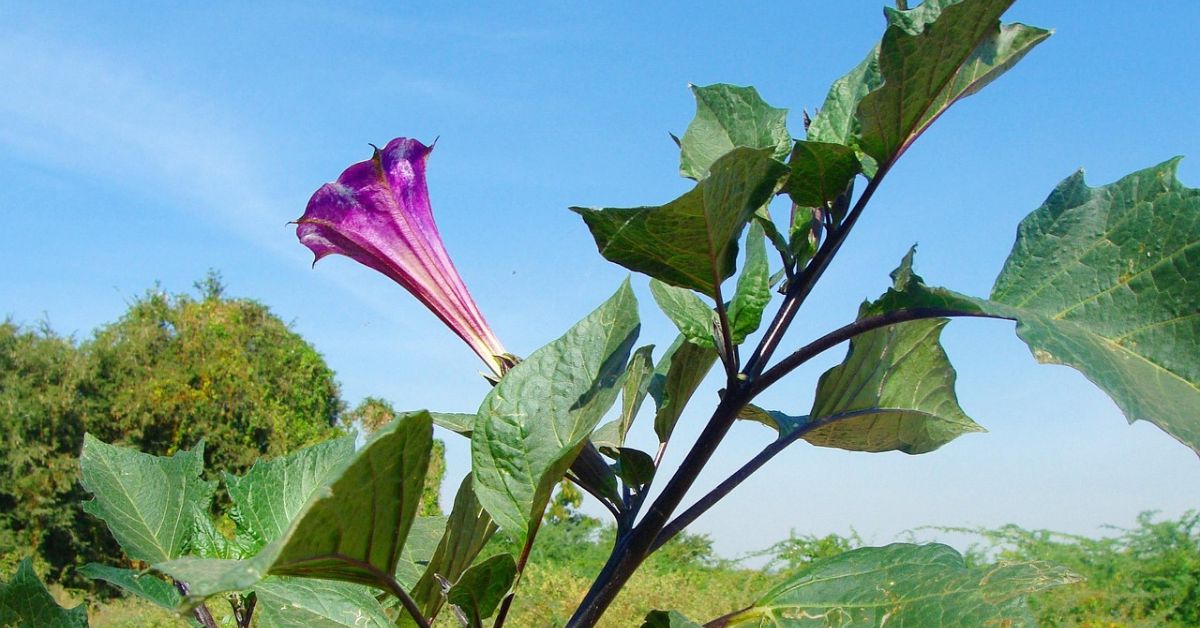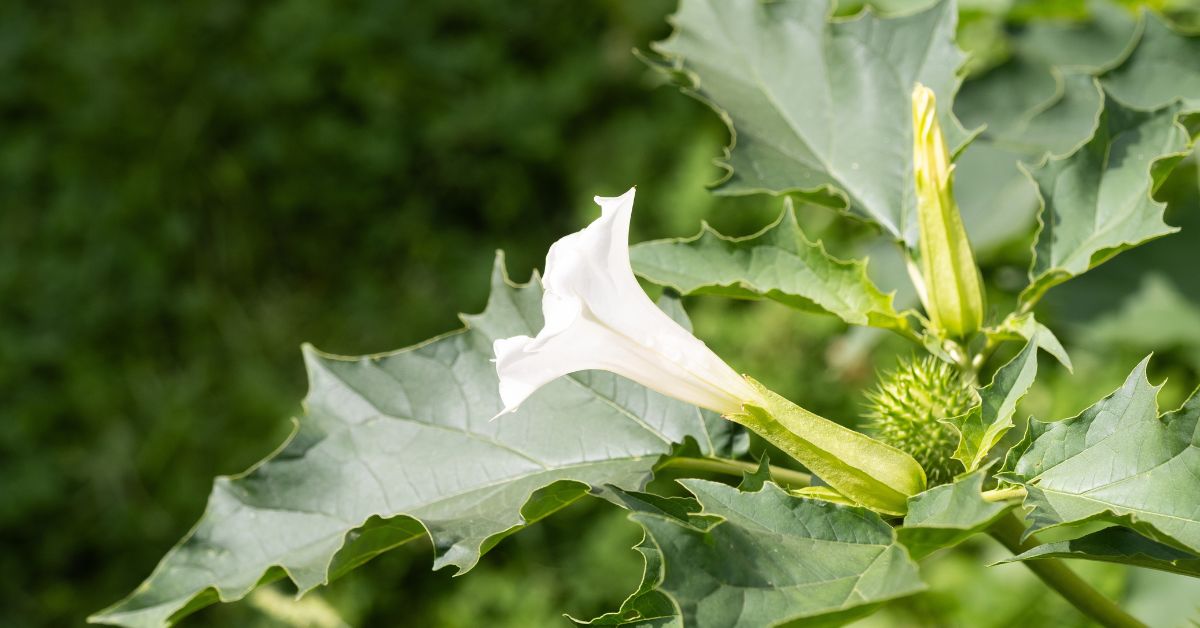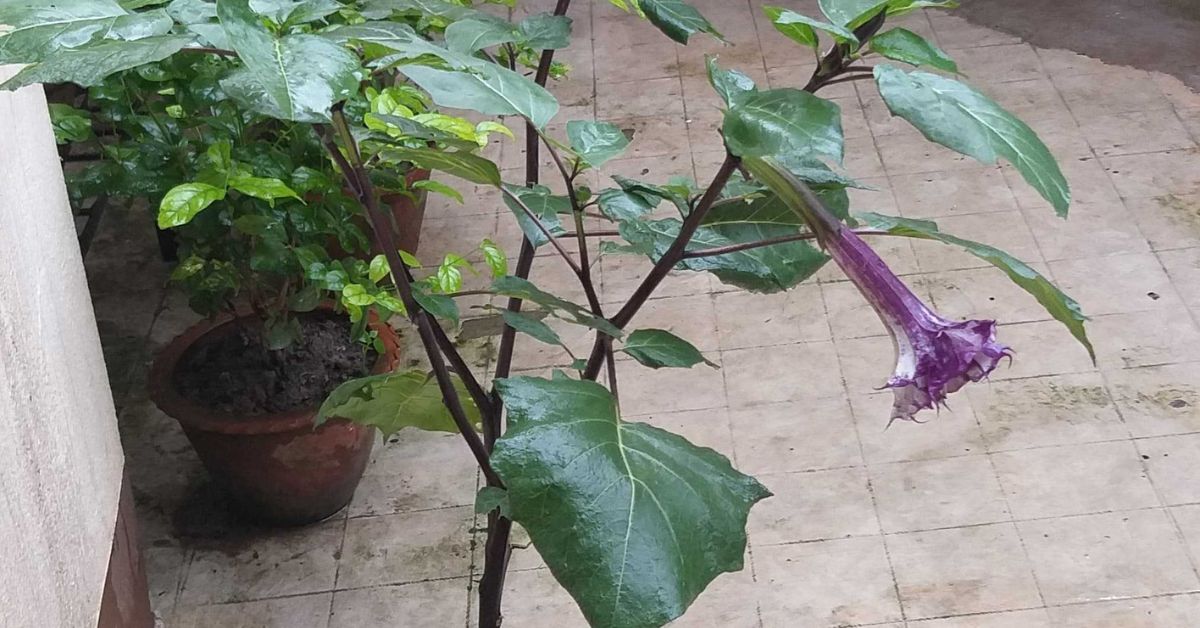This Sacred Flower Changes Colour & Blooms at Night — Here’s How to Grow It
With trumpet-shaped blooms that look like they were painted by dusk, the Datura flower is equal parts mystery and magnificence. Often called the “moonflower” for its nocturnal blooming habits and ghostly glow under moonlight, Datura has captured the imagination of gardeners, shamans, and spiritual seekers alike.
But beyond temples and traditions, Datura is a fascinating plant to grow, especially if you’re looking to add a bold, dramatic touch to your balcony or terrace garden. That said, Datura also demands respect. It is toxic if ingested, so it’s important to handle it with care, especially if you have children or pets.
But for urban gardeners looking for a touch of the mystical, it’s a rewarding flower that thrives in containers with the right care.
 Datura is a fascinating plant to grow, especially if you’re looking to add a bold, dramatic touch to your balcony. Image courtesy: phys.org
Datura is a fascinating plant to grow, especially if you’re looking to add a bold, dramatic touch to your balcony. Image courtesy: phys.org
Here are 10 steps to grow and care for Datura in your home garden:
1. Choose the right variety
Start by picking the right Datura species for container gardening. Datura metel is a popular choice for balconies — it’s compact, visually stunning, and offers striking purple or double-flowered blooms.
2. Pick a sunny spot
Datura loves sunlight. Choose a spot on your balcony or terrace that receives at least 6–8 hours of direct sun. Without enough light, the plant may grow leggy and refuse to bloom.
3. Use a large pot
The plant needs space to stretch. Use a 12–16-inch pot with good drainage holes. Datura has a deep root system, and cramped containers can stunt growth.
4. Well-draining soil is a must
Mix garden soil, cocopeat, and compost in a 1:1:1 ratio. You can also add a handful of sand or perlite to improve drainage. The plant dislikes soggy roots, so make sure water doesn’t accumulate.
5. Sow the seeds right
You can grow Datura from seeds or cuttings. If using seeds, soak them in warm water overnight to speed up germination. Sow them 1 cm deep in the soil and keep the pot in a warm, bright place.
6. Water wisely
Water deeply but let the top inch of soil dry out between watering sessions. Overwatering can cause root rot. In summer, you may need to water every two to three days; in winter, reduce the frequency.
 You can grow Datura from seeds or cuttings. Image courtesy: Shutterstock
You can grow Datura from seeds or cuttings. Image courtesy: Shutterstock
7. Fertilise monthly
Feed your Datura once a month with a balanced liquid fertiliser or compost tea. During the blooming season (spring to late monsoon), you can use a fertiliser high in phosphorus to encourage more flowers.
8. Prune for bushier growth
Once the plant is about one to one point five feet tall, pinch off the growing tips to encourage side shoots. After flowering, remove spent blooms to promote more buds and keep the plant looking tidy.
9. Watch for pests
Datura is fairly hardy, but watch out for aphids, spider mites, and whiteflies. A neem oil spray once every two weeks usually keeps pests at bay. Also, avoid overhead watering to prevent fungal infections.
10. Handle with care
Every part of the Datura plant — especially the seeds and flowers — is toxic if ingested. Always wash your hands after handling and keep the plant out of reach of pets and young children. Gloves are a good idea while pruning.
A bloom like no other
Growing Datura on your balcony is not just about the aesthetics — it’s about nurturing a living paradox: a flower both revered and feared, beautiful and dangerous, sacred and wild. As you watch its blooms unfurl at dusk, changing colours like a whispered spell, you’ll understand why so many cultures have held it in awe.
 Feed your Datura once a month with a balanced liquid fertiliser.
Feed your Datura once a month with a balanced liquid fertiliser.
With a little sun, patience, and care, this holy bloom can become the crowning jewel of your urban garden, a quiet reminder that nature, in all its mystery, still finds space to bloom amidst the concrete.
News